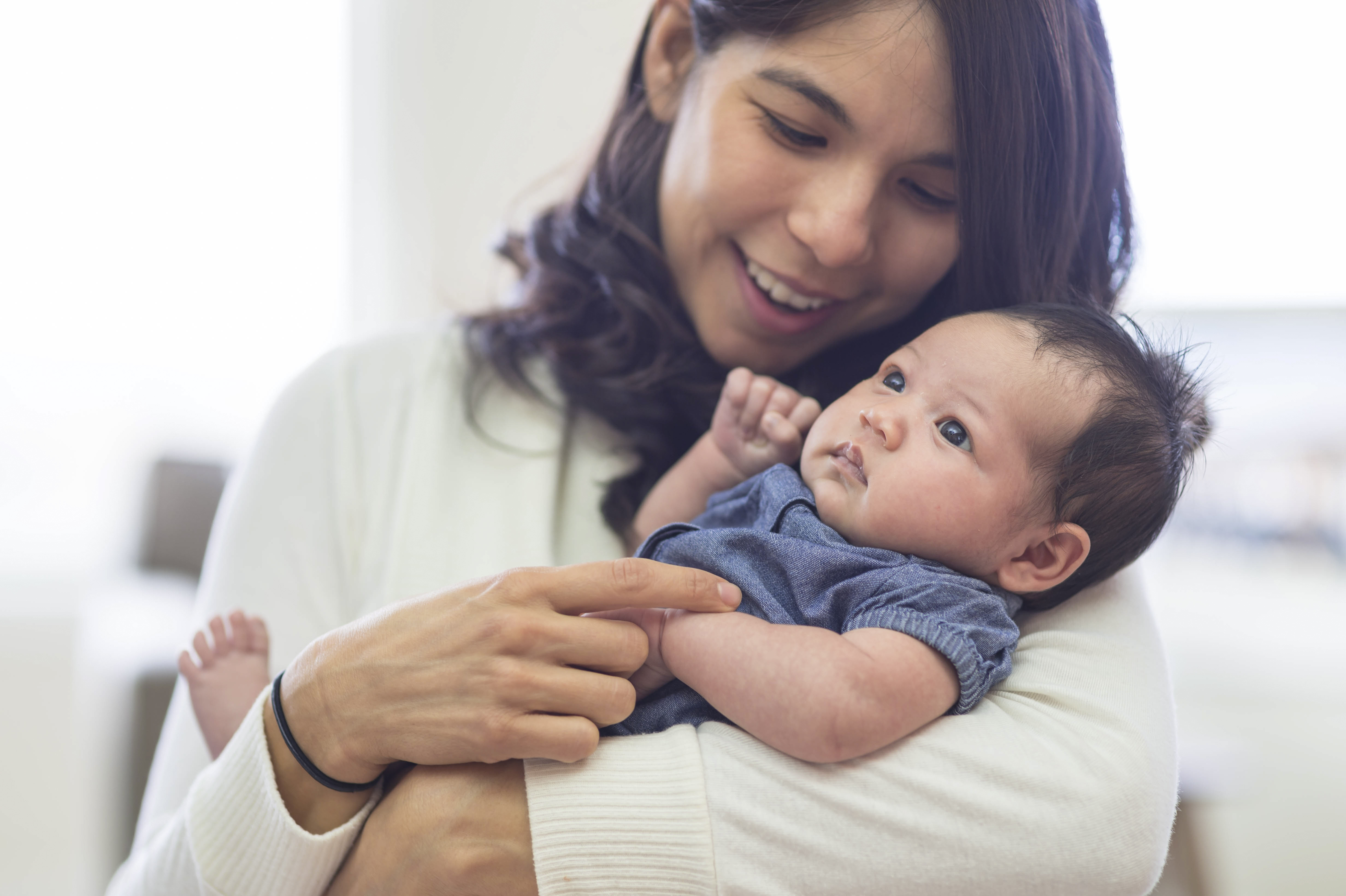Vision in newborns
Newborn babies are able to follow a light with their eyes and turn toward lights. They are very near-sighted at first, and they can focus best on things that are within 25 cm (10 inches) of their faces. Newborns have trouble focusing on objects farther away.
Their vision improves over the first three months. Don’t worry if your newborn baby can’t see the mobile hanging in their crib right away. In time, their ability to focus will improve and they will be able to see clearly.
Uncoordinated eyes
Your newborn baby’s eye movements may not be well coordinated at first. Their eyes may move independently of each other, and this is perfectly normal. It takes time for your newborn baby to learn to use their eyes and strengthen their eye muscles. The problem should resolve itself by the time your baby is three months old. If by this time your baby still has problems with their eye coordination, make sure to bring this to their health-care provider’s attention.
Crossed eyes
Sometimes the extra folds of skin in the inner corner of the eyes can make the eyes look crossed. As the baby grows, the folds will retract and the eyes will look more even. Some babies do have truly crossed eyes, which needs to be treated early. This condition is called strabismus. Crossed eyes can lead to a condition called lazy eye, where the child depends on one eye and the unused eye becomes weaker. At your child’s well visits, their health-care provider will be able to assess them for strabismus and refer them to an eye specialist (optometrist or ophthalmologist) if needed.
Teary eyes
At first, newborn babies do not have the capability to produce tears when they cry. This ability develops toward the end of the first month. Around this time, some babies develop a blocked tear duct, which is a blockage of the pathway that carries tears from the eye to the nose. The eye may seem constantly teary, with tears spilling over at times, even when the newborn baby is not crying. Usually, the eye is not red and the eyelid is not swollen, but the tears can make the eye sticky. Blocked tear ducts usually clear up by the end of the first year, but your baby’s health-care provider may recommend helping it along by massaging the inner corner of the eye. If the blockage lasts past your baby’s first birthday, an ophthalmologist may need to help open up the blockage.
Rare eye conditions in babies
Less common eye problems in infants include abnormalities of the cornea or iris and cataracts. Some of these conditions can affect vision and some can be associated with other medical conditions. Any baby with a white cloudy area on the eye, a white pupil or a white glow on the eye should be seen by an ophthalmologist.
When to see a health-care provider
- Your baby’s eyes should be regularly checked by their health-care provider at their well-baby visits.
- Infants who have a white glow, white pupil or cloudiness on the eye, or if there is a family history of childhood eye problems should be seen by an ophthalmologist.
- Babies with persistently crossed eyes or concerns about their vision should be seen by an eye specialist (optometrist or ophthalmologist).
- Babies who develop redness or swelling of the eye should be seen by their health-care provider.
- All healthy children should see an eye specialist (optometrist or ophthalmologist) at around three years of age or before starting school.

